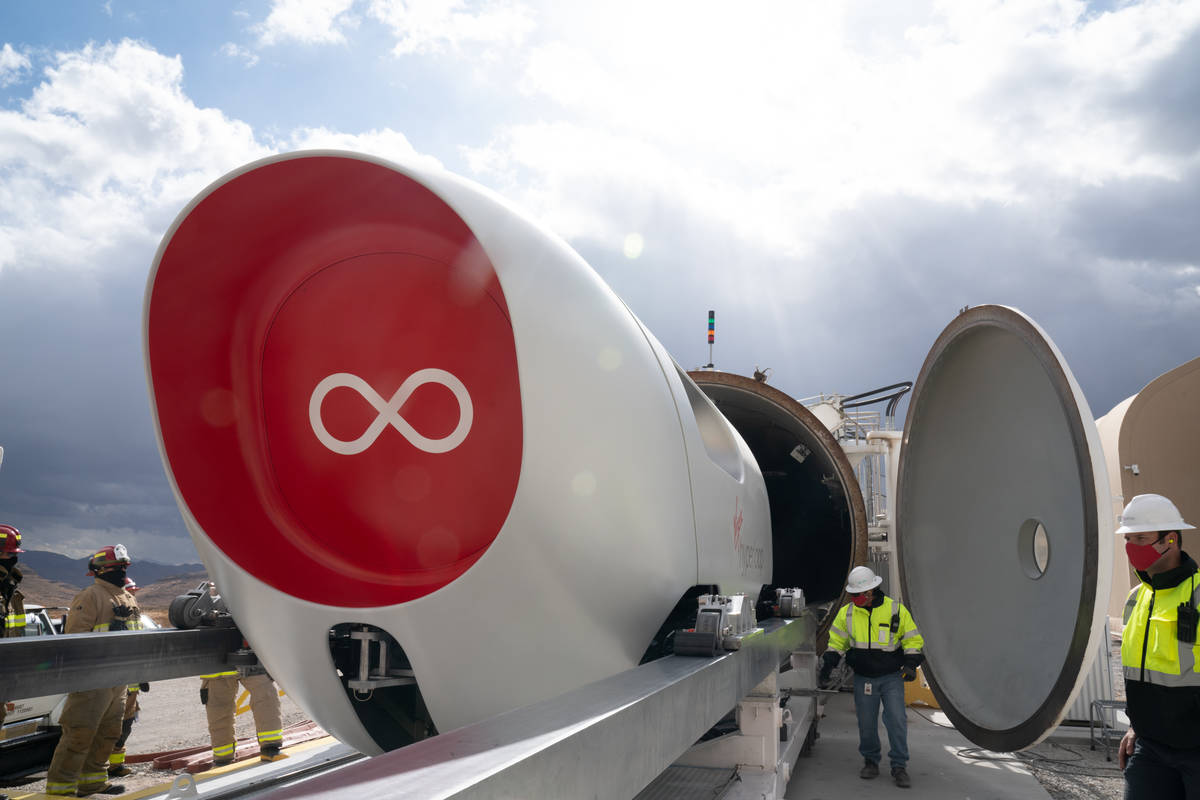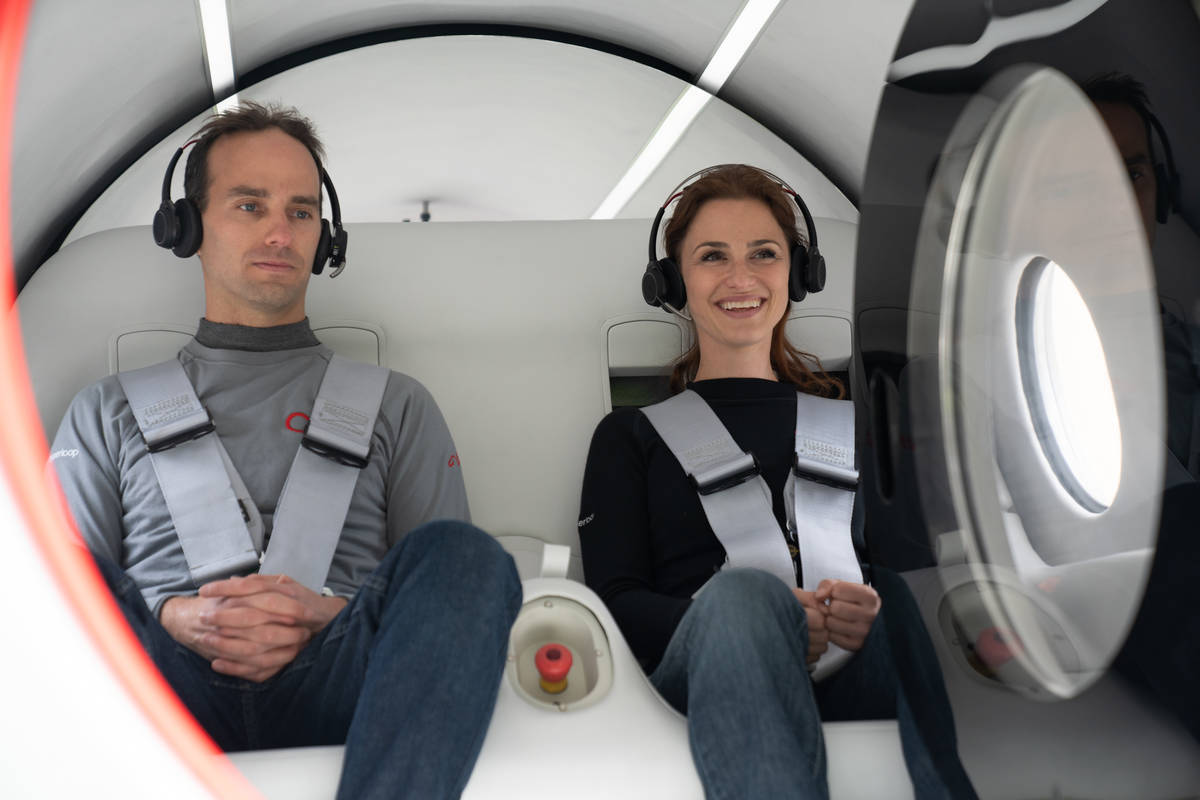Virgin Hyperloop carries out 1st test run with passengers
Virgin Hyperloop One tested its futuristic transportation system with people inside a pod for the first time on its test track near North Las Vegas.
The successful test comes four years after the company conducted its first trial run of the Hyperloop system, which officials hope one day can transport people and cargo in tunnels at speeds of over 600 mph.
“For the past few years the Virgin Hyperloop team has been working on turning its ground breaking technology into reality,” said Richard Branson, founder of the Virgin Group in a statement. “With today’s successful test, we have shown that this spirit of innovation will in fact change the way people everywhere live, work, and travel in the years to come.”
The first passengers on a Hyperloop ride were Virgin Hyperloop executives Josh Giegel, co-founder and chief technology officer, and Sara Luchian, director of passenger experience for Virgin Hyperloop.
The test took place at Virgin Hyperloop’s DevLoop test site in Apex, where the company has previously run over 400 un-occupied tests, including one topping out at 245 mph.
“When we started in a garage over 6 years ago, the goal was simple — to transform the way people move,” Giegel said in a statement. “Today we took one giant leap toward that ultimate dream, not only for me, but for all of us who are looking toward a moonshot right here on Earth.”
A hyperloop pod travels in a low-pressure, underground tube at speeds in excess of 670 mph. It’s anticipated the tubes would run largely next to major highways and within right of ways, allowing for minimal issues when building out the needed infrastructure.
The maiden human-occupied test was carried out in the new XP-2 vehicle, designed by the Bjarke Ingels Group and Kilo Design, which was custom-built with occupant safety and comfort in mind.
Plans call for a production vehicle to seat up to 28 passengers; the two-seater XP-2 vehicle was built to show passengers can safely travel in a hyperloop vehicle.
“Hyperloop is about so much more than the technology. It’s about what it enables,” Luchian said in a statement. “To me, the passenger experience ties it all together. And what better way to design the future than to actually experience it first-hand?”
Taking all the information they had from years of testing,the XP-2 vehicle features many of the safety systems that will be found on a commercial hyperloop system and is equipped with an advanced control system that can detect off-nominal states and quickly initiate proper emergency responses.
“I can’t tell you how often I get asked ‘is hyperloop safe?,’” said Jay Walder, CEO of Virgin Hyperloop in a statement. “With today’s passenger testing, we have successfully answered this question, demonstrating that not only can Virgin Hyperloop safely put a person in a pod in a vacuum environment, but that the company has a thoughtful approach to safety, which has been validated by an independent third party.”
Contact Mick Akers at makers@reviewjournal.com or 702-387-2920. Follow @mickakers on Twitter.
























